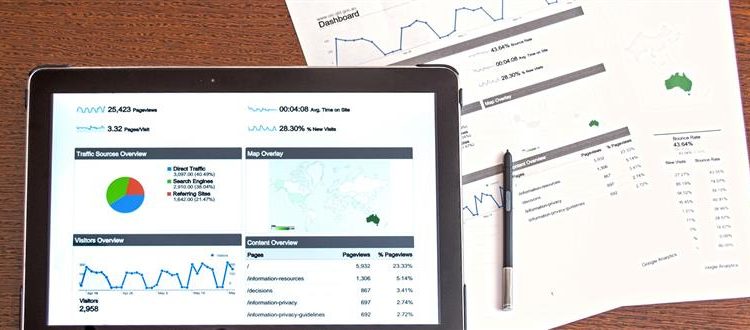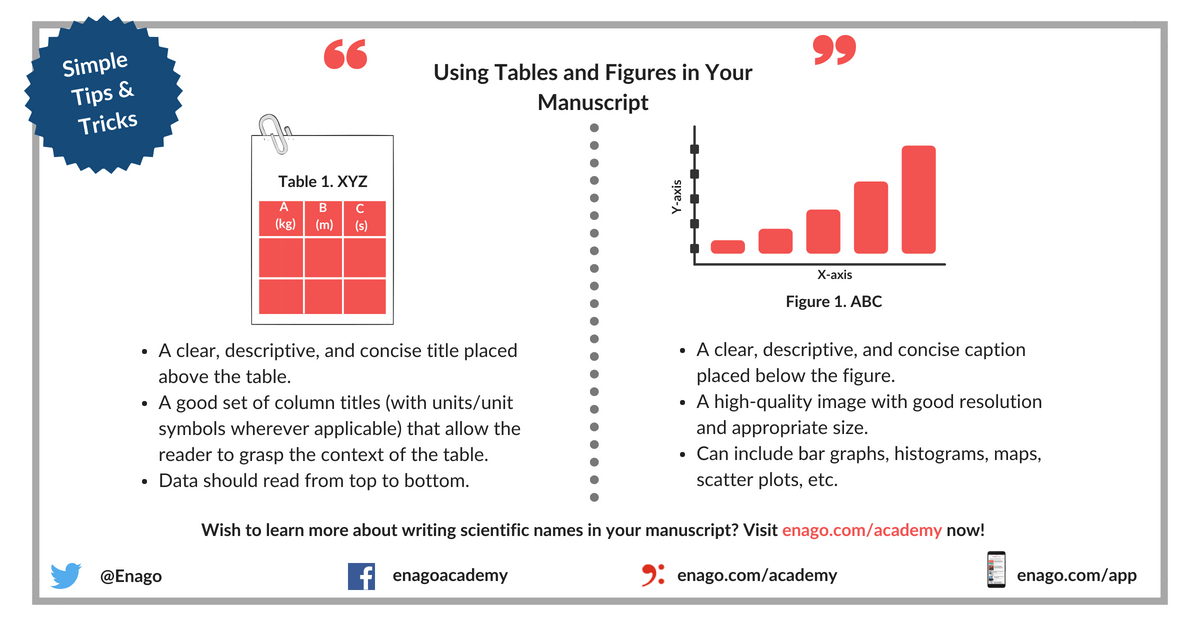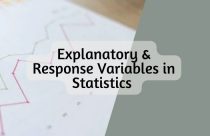Effective Use of Tables and Figures in Research Papers

Research papers are often based on copious amounts of data that can be summarized and easily read through tables and graphs. When writing a research paper, it is important for data to be presented to the reader in a visually appealing way. The data in figures and tables, however, should not be a repetition of the data found in the text. There are many ways of presenting data in tables and figures, governed by a few simple rules. An APA research paper and MLA research paper both require tables and figures, but the rules around them are different. When writing a research paper, the importance of tables and figures cannot be underestimated. How do you know if you need a table or figure? The rule of thumb is that if you cannot present your data in one or two sentences, then you need a table.
Using Tables
Tables are easily created using programs such as Excel. Tables and figures in scientific papers are wonderful ways of presenting data. Effective data presentation in research papers requires understanding your reader and the elements that comprise a table. Tables have several elements, including the legend, column titles, and body. As with academic writing, it is also just as important to structure tables so that readers can easily understand them. Tables that are disorganized or otherwise confusing will make the reader lose interest in your work.
- Title: Tables should have a clear, descriptive title, which functions as the “topic sentence” of the table. The titles can be lengthy or short, depending on the discipline.
- Column Titles: The goal of these title headings is to simplify the table. The reader’s attention moves from the title to the column title sequentially. A good set of column titles will allow the reader to quickly grasp what the table is about.
- Table Body: This is the main area of the table where numerical or textual data is located. Construct your table so that elements read from up to down, and not across.
Related: Done organizing your research data effectively in tables? Check out this post on tips for citing tables in your manuscript now!
The placement of figures and tables should be at the center of the page. It should be properly referenced and ordered in the number that it appears in the text. In addition, tables should be set apart from the text. Text wrapping should not be used. Sometimes, tables and figures are presented after the references in selected journals.
Using Figures
Figures can take many forms, such as bar graphs, frequency histograms, scatterplots, drawings, maps, etc. When using figures in a research paper, always think of your reader. What is the easiest figure for your reader to understand? How can you present the data in the simplest and most effective way? For instance, a photograph may be the best choice if you want your reader to understand spatial relationships.
- Figure Captions: Figures should be numbered and have descriptive titles or captions. The captions should be succinct enough to understand at the first glance. Captions are placed under the figure and are left justified.
- Image: Choose an image that is simple and easily understandable. Consider the size, resolution, and the image’s overall visual attractiveness.
- Additional Information: Illustrations in manuscripts are numbered separately from tables. Include any information that the reader needs to understand your figure, such as legends.
Common Errors in Research Papers
Effective data presentation in research papers requires understanding the common errors that make data presentation ineffective. These common mistakes include using the wrong type of figure for the data. For instance, using a scatterplot instead of a bar graph for showing levels of hydration is a mistake. Another common mistake is that some authors tend to italicize the table number. Remember, only the table title should be italicized. Another common mistake is failing to attribute the table. If the table/figure is from another source, simply put “Note. Adapted from…” underneath the table. This should help avoid any issues with plagiarism.
Using tables and figures in research papers is essential for the paper’s readability. The reader is given a chance to understand data through visual content. When writing a research paper, these elements should be considered as part of good research writing. APA research papers, MLA research papers, and other manuscripts require visual content if the data is too complex or voluminous. The importance of tables and graphs is underscored by the main purpose of writing, and that is to be understood.
Frequently Asked Questions
"Consider the following points when creating figures for research papers:
Determine purpose: Clarify the message or information to be conveyed.
Choose figure type: Select the appropriate type for data representation.
Prepare and organize data: Collect and arrange accurate and relevant data.
Select software: Use suitable software for figure creation and editing.
Design figure: Focus on clarity, labeling, and visual elements.
Create the figure: Plot data or generate the figure using the chosen software.
Label and annotate: Clearly identify and explain all elements in the figure.
Review and revise: Verify accuracy, coherence, and alignment with the paper.
Format and export: Adjust format to meet publication guidelines and export as suitable file."
"To create tables for a research paper, follow these steps:
1) Determine the purpose and information to be conveyed.
2) Plan the layout, including rows, columns, and headings.
3) Use spreadsheet software like Excel to design and format the table.
4) Input accurate data into cells, aligning it logically.
5) Include column and row headers for context.
6) Format the table for readability using consistent styles.
7) Add a descriptive title and caption to summarize and provide context.
8) Number and reference the table in the paper.
9) Review and revise for accuracy and clarity before finalizing."
"Including figures in a research paper enhances clarity and visual appeal. Follow these steps:
Determine the need for figures based on data trends or to explain complex processes.
Choose the right type of figure, such as graphs, charts, or images, to convey your message effectively.
Create or obtain the figure, properly citing the source if needed.
Number and caption each figure, providing concise and informative descriptions.
Place figures logically in the paper and reference them in the text.
Format and label figures clearly for better understanding.
Provide detailed figure captions to aid comprehension.
Cite the source for non-original figures or images.
Review and revise figures for accuracy and consistency."
"Research papers use various types of tables to present data:
Descriptive tables: Summarize main data characteristics, often presenting demographic information.
Frequency tables: Display distribution of categorical variables, showing counts or percentages in different categories.
Cross-tabulation tables: Explore relationships between categorical variables by presenting joint frequencies or percentages.
Summary statistics tables: Present key statistics (mean, standard deviation, etc.) for numerical variables.
Comparative tables: Compare different groups or conditions, displaying key statistics side by side.
Correlation or regression tables: Display results of statistical analyses, such as coefficients and p-values.
Longitudinal or time-series tables: Show data collected over multiple time points with columns for periods and rows for variables/subjects.
Data matrix tables: Present raw data or matrices, common in experimental psychology or biology.
Label tables clearly, include titles, and use footnotes or captions for explanations."










Enago is a very useful site. It covers nearly all topics of research writing and publishing in a simple, clear, attractive way. Though I’m a journal editor having much knowledge and training in these issues, I always find something new in this site.
Thank you
“Thank You, your contents really help me :)”